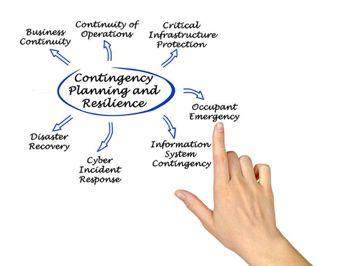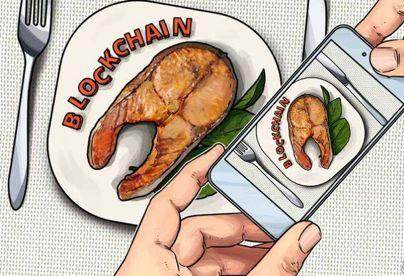编者按:供应链计划流程对整体供应链效率起着关键作用。提高需求预测的准确性,可以显著降低库存成本、加快现金循环周期。要在短时间内提供与市场需求相符合的产品与服务,弹性的计划能力成为重中之重。与此同时,逐步成熟的区块链技术,正在颠覆性供应链的运行模式。区块链技术从金融科技到零售、到冷链、到海运、港口、到空运,正在全面进入供应链领域。如果说2017年是区块链进入供应链应用的起步阶段,2018年将见证区块供应链大规模发展。本期选取两篇资讯,跟大家分享一下供应链计划能力和区块链应用带来的重大影响。王国文
1、弹性计划能力是企业优化供应链的成功关键
企业优化供应链的关键在于建立弹性的计划,通过建立灵活的计划,可以让企业迅速从破坏性的环境条件变化中恢复过来,重返标准化操作条件。
同时,通过建立灵活的流程,可以增强供应链组织适应变化的能力,使得供应链既可以承受严重的中断,又可以更好地响应需求的波动。
此外,团队的灵活性同样增强了供应链计划的弹性,聘用具有出色分析、沟通技能的人才对于供应链优化至关重要。供应链优化要注重集成计划系统的价值,采用正确的计划技术组合才能确保成功。
有兴趣的读者可以关注一下原文里面的信息
Now what about flexibility? When flexibility or agility is increased, the supply chain can both withstand significant disruptions and better respond to demand fluctuations. Flexibility increases your ability to optimize. Flexible processes enhance a supply chain planning organization’s ability to adapt to changes and quickly adjust course towards optimal planning. In some organizations where procedures are set in stone it almost takes an act of god to deviate from those procedures. Organizations that follow guidelines are more agile and better positioned to embrace new paradigms.
Team flexibility enhances supply chain planning resilience. In today’s “war for talent” it is essential to hire people with excellent analytical, communication, and people skills. To retain talent, many supply chain organizations have instituted functional rotation programs to expose team members to various parts of the supply chain. Organizations have also adopted mentorship programs and formal succession planning processes to enhance retention. Finally, because the field of supply chain planning is always changing and advancing, it is essential that team members be encouraged to participate in professional organizations, obtain certifications and system knowledge and pursue advanced education. Some organizations offer monetary bonuses for training that leads to certifications。
2、将区块链技术应用在供应链流程中,可以打造高效的供应链管理体系
尽管许多企业都在努力精简和优化其供应链流程,但他们中的大多数都面临着一些挑战,比如说:在与全球供应商打交道时,缺乏对运送货物当前位置和产品真实性的可视性,造成一定的损失(例如易腐食品)。因此,能够对每个产品进行溯源对企业来说至关重要,这也成为了高效供应链管理的一大障碍。
区块链技术是一个开放的分布式系统,可以使用加密技术以永久和可验证的方式记录各方之间的交易。信息不是存储在一个集中的数据库中,而是存储在多个位置,使其具有真正的分散性。因此,区块链技术可以应对以上挑战。
2017年,我们已经见证了区块链在零售、冷链、海运、空运、港口的初步应用,2018年,将迎来区块链在供应链中的大规模应用期。
有兴趣的读者可以关注一下原文里面的信息
Blockchain is an open, distributed ledger system that can record transactions between parties in a permanent and verifiable way using cryptography. Information is not stored in a single, centralized database, rather stored in multiple locations making it truly decentralized.
Here are some use cases to show how blockchain technology has solved supply chain problems:
1. 钻石行业一直饱受“血腥钻石”和假冒产品的困扰。
The diamond industry has been historically plagued with ‘Blood Diamonds’ and counterfeit diamonds. Tracking the origin of a diamond from inception until sale has not been a transparent process. Companies like De Beers are now using blockchain technology to track precious stones from the point of mining until the time it’s sold to a customer. The secure and immutable properties of blockchain coupled with machine learning, Internet of Things (IoT) and state of the art encryption are helping companies to establish authenticity and get visibility into the sale of diamonds.
2. 最近在俄勒冈和华盛顿州爆发的大肠杆菌可能与Ciptoter餐厅的食物有关。
The recent outbreak of E. coli in Oregon and Washington states were potentially linked to food consumed in Chipotle restaurants. This not only affected the health of people but also dented the image of Chipotle. Loss of inventory due to spoilage of perishable goods with limited shelf life is a common problem in the food industry and companies are now using technologies like Hyperledger Sawtooth based on blockchain technology to solve this problem.
Let’s take an example to understand this in more detail. A big restaurant chain which specializes in sea food is usually faced with questions such as: how fresh is a vendor’s sea food; how did it get to the restaurant; is it really the same sea food that the vendor is claiming, etc. These are critical questions as they directly impact its customer’s health and the reputation of the restaurant. These questions can be answered by using a combination of solutions offered by Sawtooth blockchain technology and IoT. Sensors attached to the fishes send constant sensor data and this along with Sawtooth’s trackability blockchain technology will give complete visibility to the restaurant about when was the fish caught, and how was it stored and transported.
3. 当中国的制造商向美国的母公司运送货物时。
When a manufacturing unit in China ships goods to its parent company in the U.S., there could be hundreds of logistical touch points like moving the cargo from the factory in China to a nearby port; getting the clearance and approval from local authorities; working with other vendors to move the goods while in transit; getting customs approval in US; and finally loading the items in a warehouse in the U.S. A lot of time and money is spent on manual paper work, working with local jurisdictional authorities and other vendors. Most of this can be avoided by using Smart Contracts built on blockchain technology using a cryptocurrency like Ethereum. Smart Contract is a piece of software that uses data and analytics to store rules for negotiating the terms of contract, automatically verifies the contracts and executes the agreed terms. This creates a visible workflow so that all parties on the blockchain network can see the history and next steps in the execution pipeline, thus improving the overall supply chain efficiency.
Blockchain technology is not only impacting Supply Chain industry but also other industries like Retail, Real Estate, Banking, and Healthcare. There is immense potential in Blockchain technology and according to industry experts, 2018 will be a milestone year that we will see the adoption of the first set of blockchain solutions in enterprise applications.
有效的计划可以使供应链变得更加有弹性,能够在短时间内提供与市场需求相符合的产品与服务;而区块链等颠覆性技术的应用则能够使供应链变得更加高效,并有可能彻底颠覆传统供应链的运作流程。2018年是供应链发展里程碑式的一年,我们将会看到各大企业在供应链管理方面的巨大创新。
文章来源 | http://scdigest.com
编译 | 杨龙龙
校 | 王国文




